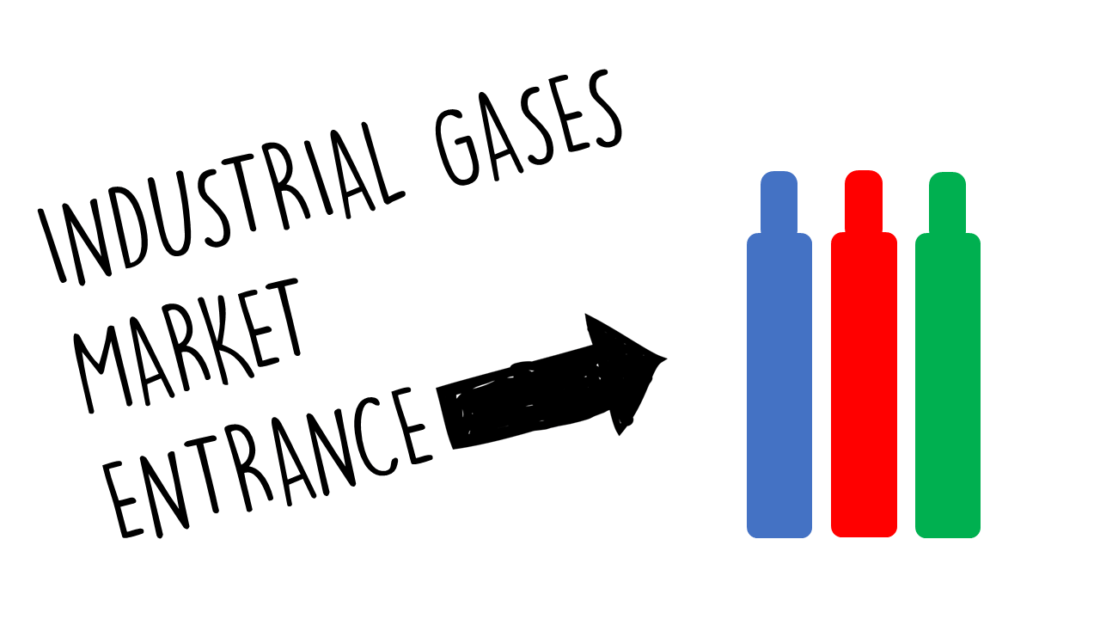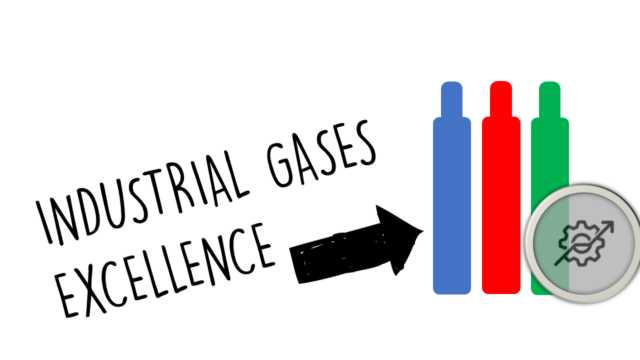Introduction: Understanding the Growth of the Industrial Gases Market in China
The industrial gases market in China has experienced significant growth in recent years. Industrial gases, such as oxygen, nitrogen, and carbon dioxide, are essential for a wide range of industries, including manufacturing, healthcare, and electronics. The demand for these gases is driven by the rapid industrialization and urbanization in China, as well as the increasing focus on environmental sustainability.
China is the largest consumer of industrial gases in the world, accounting for a significant share of the global market. The country’s booming manufacturing sector, which includes industries such as steel, chemicals, and electronics, has been a major driver of the demand for industrial gases. Additionally, the growing healthcare industry in China has also contributed to the increased demand for medical gases.
Market Overview: Exploring the Opportunities and Potential in China’s Industrial Gases Sector
The industrial gases market in China is projected to continue its growth trajectory in the coming years. According to a report by Grand View Research, the market is expected to reach a value of $20.6 billion by 2025, growing at a CAGR of 6.8% from 2019 to 2025. This growth can be attributed to several factors.
Firstly, the rapid industrialization and urbanization in China have led to an increased demand for industrial gases. As more industries are established and existing ones expand, there is a greater need for gases such as oxygen and nitrogen for various applications, including metal fabrication, chemical production, and wastewater treatment.
Secondly, the focus on environmental sustainability has also contributed to the growth of the industrial gases market in China. The government has implemented strict regulations to reduce pollution and promote clean energy sources. This has led to an increased demand for industrial gases for applications such as air pollution control and renewable energy production.
Thirdly, the growing healthcare industry in China has created new opportunities for the industrial gases market. The demand for medical gases, such as oxygen and nitrous oxide, has increased with the expansion of hospitals and healthcare facilities across the country. Additionally, the aging population and rising healthcare expenditure have further fueled the demand for medical gases.
Key Players: Identifying the Major Companies and Their Strategies in the Chinese Market
The industrial gases market in China is highly competitive, with several major players dominating the market. Some of the key players in the industry include Air Liquide, Linde plc, and Praxair Inc. These companies have a strong presence in China and have implemented various strategies to maintain their market share.
Air Liquide is one of the leading players in the industrial gases market in China. The company has a wide range of products and services, including gases, equipment, and technologies. Air Liquide has focused on expanding its presence in China through strategic partnerships and acquisitions. For example, in 2018, the company acquired a 10% stake in Hangzhou Hangyang Co., Ltd., a leading Chinese manufacturer of air separation units.
Linde plc is another major player in the industrial gases market in China. The company has a strong presence in various industries, including chemicals, healthcare, and electronics. Linde has implemented a strategy of investing in research and development to develop innovative solutions for its customers. Additionally, the company has focused on expanding its production capacity in China to meet the growing demand for industrial gases.
Praxair Inc., now part of Linde plc following a merger in 2018, is also a key player in the Chinese market. The company has a strong presence in various industries, including metals, chemicals, and electronics. Praxair has implemented a strategy of focusing on customer relationships and providing customized solutions to meet their specific needs. The company has also invested in research and development to develop new applications for industrial gases.
Market Entry Strategies: How to Successfully Enter and Navigate the Industrial Gases Market in China
Entering the industrial gases market in China can be challenging, but with the right strategies, companies can succeed in this lucrative market. There are several market entry strategies available to companies looking to establish a presence in China.
One strategy is to form strategic partnerships or joint ventures with local companies. This allows companies to leverage the local partner’s knowledge of the market and established distribution networks. Additionally, partnering with a local company can help navigate the complex regulatory environment in China.
Another strategy is to establish a wholly-owned subsidiary in China. This gives companies full control over their operations and allows them to tailor their products and services to the specific needs of the Chinese market. However, setting up a subsidiary in China can be time-consuming and costly, and companies must be prepared to invest significant resources.
Companies can also consider acquiring existing Chinese companies in the industrial gases sector. This allows for a quick entry into the market and access to an established customer base. However, acquiring a company in China can be complex, and companies must carefully evaluate the target company’s financials, operations, and reputation.
When entering the Chinese market, companies must also consider the cultural and business differences. Building relationships with local partners and customers is crucial for success in China. Additionally, companies must be aware of the regulatory environment and ensure compliance with all relevant laws and regulations.
Regulatory Environment: Understanding the Policies and Regulations Governing the Industrial Gases Industry in China
The industrial gases industry in China is subject to various policies and regulations aimed at ensuring safety, environmental protection, and fair competition. Understanding these regulations is crucial for companies looking to enter or operate in the Chinese market.
The main regulatory body overseeing the industrial gases industry in China is the State Administration for Market Regulation (SAMR). SAMR is responsible for enforcing laws related to product quality, safety standards, and fair competition. Companies must comply with the relevant standards and obtain the necessary certifications and licenses to operate in China.
One of the key regulations affecting the industrial gases industry in China is the Safety Production Law. This law sets out the requirements for the safe production, storage, and transportation of industrial gases. Companies must adhere to strict safety standards and implement measures to prevent accidents and ensure the safety of their employees and the public.
Another important regulation is the Environmental Protection Law. This law aims to reduce pollution and promote sustainable development. Companies in the industrial gases industry must comply with environmental regulations, such as emissions standards and waste management requirements. Additionally, companies are encouraged to invest in clean technologies and energy-efficient processes.
The Chinese government has also implemented policies to promote fair competition in the industrial gases industry. For example, the Anti-Monopoly Law prohibits anti-competitive practices, such as price-fixing and market allocation. Companies must ensure that their business practices comply with these regulations to avoid penalties and legal consequences.
Market Trends: Analyzing the Current and Future Trends Shaping the Industrial Gases Market in China
The industrial gases market in China is influenced by several trends that are shaping its growth and development. Understanding these trends is crucial for companies looking to succeed in this dynamic market.
One of the current trends in the industrial gases market in China is the increasing demand for specialty gases. Specialty gases are high-purity gases used in specific applications, such as electronics manufacturing and healthcare. The growing electronics industry in China, coupled with advancements in technology, has led to an increased demand for specialty gases.
Another trend is the shift towards renewable energy sources. The Chinese government has set ambitious targets for reducing carbon emissions and increasing the share of renewable energy in the country’s energy mix. This has led to an increased demand for industrial gases for applications such as hydrogen production and carbon capture and storage.
The digitalization of industries is also impacting the industrial gases market in China. Companies are increasingly adopting digital technologies, such as Internet of Things (IoT) and artificial intelligence (AI), to optimize their operations and improve efficiency. This has created new opportunities for industrial gas suppliers to provide innovative solutions and services.
Looking ahead, the industrial gases market in China is expected to continue its growth trajectory. The increasing focus on environmental sustainability, coupled with the rapid industrialization and urbanization in the country, will drive the demand for industrial gases. Additionally, advancements in technology and the emergence of new industries will create new opportunities for companies in the sector.
Competitive Landscape: Assessing the Competitive Dynamics and Key Challenges in the Chinese Market
The industrial gases market in China is highly competitive, with several major players vying for market share. The competitive dynamics in the market are influenced by factors such as product quality, pricing, distribution networks, and customer relationships.
One of the key challenges faced by companies in the industrial gases market in China is price competition. The market is characterized by intense price competition, with companies often engaging in price wars to gain market share. This puts pressure on profit margins and makes it challenging for companies to differentiate themselves based on price alone.
Another challenge is building strong customer relationships. The industrial gases market is highly customer-centric, and companies must understand their customers’ needs and provide customized solutions. Building trust and loyalty with customers is crucial for long-term success in the market.
Companies also face challenges related to distribution and logistics. Industrial gases are typically delivered in cylinders or through pipelines, and companies must have an efficient distribution network to ensure timely delivery to customers. Additionally, companies must comply with strict safety regulations for the storage and transportation of industrial gases.
To overcome these challenges, companies in the industrial gases market in China employ various strategies. This includes investing in research and development to develop innovative products and solutions, focusing on customer relationships and providing excellent customer service, and optimizing their distribution networks to ensure efficient delivery.
Market Segmentation: Identifying the Key Application Areas and Customer Segments in the Industrial Gases Industry
The industrial gases market in China can be segmented based on application areas and customer segments. Understanding these segments is crucial for companies looking to target specific markets and customers.
In terms of application areas, the industrial gases market in China can be divided into several categories. One of the key application areas is the manufacturing industry, which includes industries such as steel, chemicals, and electronics. Industrial gases are used in various processes, such as metal fabrication, chemical production, and semiconductor manufacturing.
Another important application area is the healthcare industry. Medical gases, such as oxygen and nitrous oxide, are essential for hospitals and healthcare facilities. The growing healthcare industry in China, coupled with the aging population and rising healthcare expenditure, has led to an increased demand for medical gases.
The electronics industry is also a significant customer segment for the industrial gases market in China. Gases such as nitrogen and argon are used in electronics manufacturing processes, such as soldering and wafer fabrication. The booming electronics industry in China, driven by consumer demand for smartphones and other electronic devices, has created new opportunities for industrial gas suppliers.
Other application areas for industrial gases in China include food and beverage processing, chemicals production, and environmental protection. Each of these segments has its own unique requirements and challenges, and companies must tailor their products and services to meet the specific needs of each segment.
Investment Opportunities: Exploring the Potential for Foreign Investors in China’s Industrial Gases Market
The industrial gases market in China offers significant investment opportunities for foreign investors. The country’s rapid industrialization and urbanization, coupled with the increasing focus on environmental sustainability, create a favorable business environment for companies in the sector.
One of the key investment opportunities in the industrial gases market in China is the growing demand for specialty gases. Specialty gases are high-purity gases used in specific applications, such as electronics manufacturing and healthcare. The increasing demand for specialty gases, driven by the booming electronics industry and advancements in technology, presents an attractive investment opportunity for foreign investors.
Another investment opportunity is the shift towards renewable energy sources. The Chinese government has set ambitious targets for reducing carbon emissions and increasing the share of renewable energy in the country’s energy mix. This has led to an increased demand for industrial gases for applications such as hydrogen production and carbon capture and storage.
Foreign investors can also explore opportunities in the healthcare industry in China. The growing healthcare industry, coupled with the aging population and rising healthcare expenditure, has created a demand for medical gases. Investing in the production and distribution of medical gases can be a lucrative opportunity for foreign investors.
However, investing in the industrial gases market in China also comes with risks. The market is highly competitive, and companies must be prepared to face intense price competition. Additionally, navigating the regulatory environment and building strong relationships with local partners and customers can be challenging for foreign investors.
To succeed in the industrial gases market in China, foreign investors must conduct thorough market research, understand the local business culture, and develop a comprehensive market entry strategy. It is also important to partner with local companies or hire local talent to navigate the complex regulatory environment and establish strong relationships with customers.
Conclusion: Unlocking the Potential: Key Takeaways and Recommendations for Succeeding in the Industrial Gases Market in China
The industrial gases market in China offers significant opportunities for companies looking to expand their presence in this dynamic market. The rapid industrialization and urbanization in China, coupled with the increasing focus on environmental sustainability, create a favorable business environment for companies in the sector.
To succeed in the industrial gases market in China, companies must understand the market dynamics, including the size and value of the market, the key players and their strategies, and the regulatory environment. Companies must also develop a comprehensive market entry strategy, considering factors such as partnerships, acquisitions, and wholly-owned subsidiaries.
Building strong customer relationships and providing excellent customer service are crucial for success in the industrial gases market in China. Companies must understand their customers’ needs and provide customized solutions to meet their specific requirements. Additionally, companies must invest in research and development to develop innovative products and solutions that differentiate them from competitors.
Overall, the industrial gases market in China presents significant opportunities for companies willing to invest in this dynamic market. With the right strategies and a thorough understanding of the market, companies can unlock the potential and succeed in this lucrative industry.




